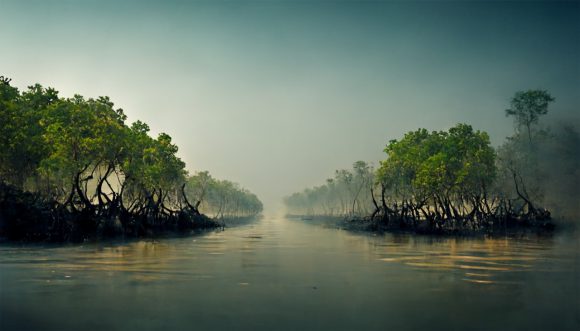Reaping what we sow
Protecting natural assets and the critical role of investments in food production

Natural capital is a fast-growing and increasingly urgent topic in sustainability circles. Aarti Ramachandran explains why, and the critical role of investment and agriculture in protecting nature and its life-giving ecosystem services.
It is awe-inspiring to witness scientists debate the advent of a new geological epoch, the Anthropocene1 – the age of humans. In the Earth's 4.6-billion-year timeline, the current Holocene epoch began with the end of the last ice age; scientists believe the Anthropocene began around 1950.
Global warming's rapid acceleration, reshaping our climate, indisputably heralds the Anthropocene. Human activity has also impacted our stock of natural resources, such as air, water, land and the amount of flora and fauna in our biodiversity systems – what we collectively call our natural capital assets. Worryingly, many ecosystems are deteriorating beyond repair, with current extinction rates soaring between 100 to 1,000 times higher than the baseline rate.
Preserving biodiversity holds inherent allure, but only recently have we ventured to quantify its economic value. The risk of widespread loss and degradation of our natural capital assets spurred the UK's finance ministry to commission the first global review on the economics of biodiversity in 2021, the so-called Dasgupta Review. The review's conclusion is sombre: between 1992 and 2014, produced capital per person doubled, and human capital per person increased by about 13% globally; but the stock of natural capital per person declined by nearly 40%.
The significance of this decline lies in our absolute dependency on natural capital assets. Take the simple example of bees and other pollinators: at least 75% of the world's crops and 35% of our food production relies, at least in part, on pollinators2. There are already signs of the near extinction of some pollinators, which jeopardizes 5-8% of agricultural production and USD 235 billion to USD577 billion worth of global annual output.3 These losses compound the challenges faced by the consumer staples sector, which is already grappling with increasingly frequent water issues, degraded land, extreme weather events and surging food demand. For real asset owners and managers, including agricultural land, the biodiversity and nature crisis is another critical issue to manage and mitigate. The evolution of technology does provide some solution here, yet precision agriculture and artificial pollination are not without their challenges.
The adage "what you sow, so you reap" takes on a meaningful pun here. Agriculture, so vulnerable to natural capital impairment, is also the single, biggest driver of this impairment. Analysis from McKinsey estimates that crop agriculture accounts for 72% of freshwater consumption, 61% of nitrogen runoff pollution, and 32% of terrestrial biodiversity loss. Livestock agriculture is the largest contributor to biodiversity loss (53%), and phosphorus pollution is the second-largest contributor to nitrogen runoff and deposition (51%).4 Our use of chemical fertilizers is widely seen as a marker for the Anthropocene5. Yet, agricultural production is under pressure to continue to grow to meet a larger and wealthier global population; the pressure on this sector to reduce its impact on nature while at the same time increase its output is mounting quickly.
The good news is that governments are waking up to these risks, introducing legislation that will increase regulatory action and catalyze market solutions. In December 2022, 196 countries adopted the Kunming-Montreal Agreement, a Paris Agreement-style commitment to halt and reverse biodiversity loss by 2030. The EU now targets biodiversity risks across multiple regulations, including a widespread law to curb the sale of agriculture commodities produced through forest loss. The Taskforce on Natural Capital TCFD-style initiative is constructing a risk management and disclosure framework for companies and investors concerning nature-related risks. Standards are evolving too; Leading Harvest in the US for example, establishes best practice for agriculture stakeholders to mitigate negative impacts on biodiversity and nature.
Markets, both public and private, are also turning to the investment opportunity in the coming nature transition. Research from UBS estimates that supply-side industries supporting the farming sector's adaptation to climate change and protection of biodiversity could grow threefold, surpassing USD1 trillion by 2050.6 Opportunities abound, from investing in forest restoration, regenerative agriculture, and biodegradable packaging materials, all the way to addressing water scarcity in developed and developing markets through funding aging water infrastructure.
This existential threat to nature and biodiversity calls for a radical shift in the status quo. However, perhaps not as radical if we embrace the central premise of the Dasgupta Review—that whether you are a farmer or a miner, we are all asset managers. The opportunity to redefine investment strategies to protect our most important and productive asset, nature, seems like prudent portfolio management.
Make an inquiry
Fill in an inquiry form and leave your details – we’ll be back in touch.
Introducing our leadership team
Meet the members of the team responsible for UBS Asset Management’s strategic direction.

